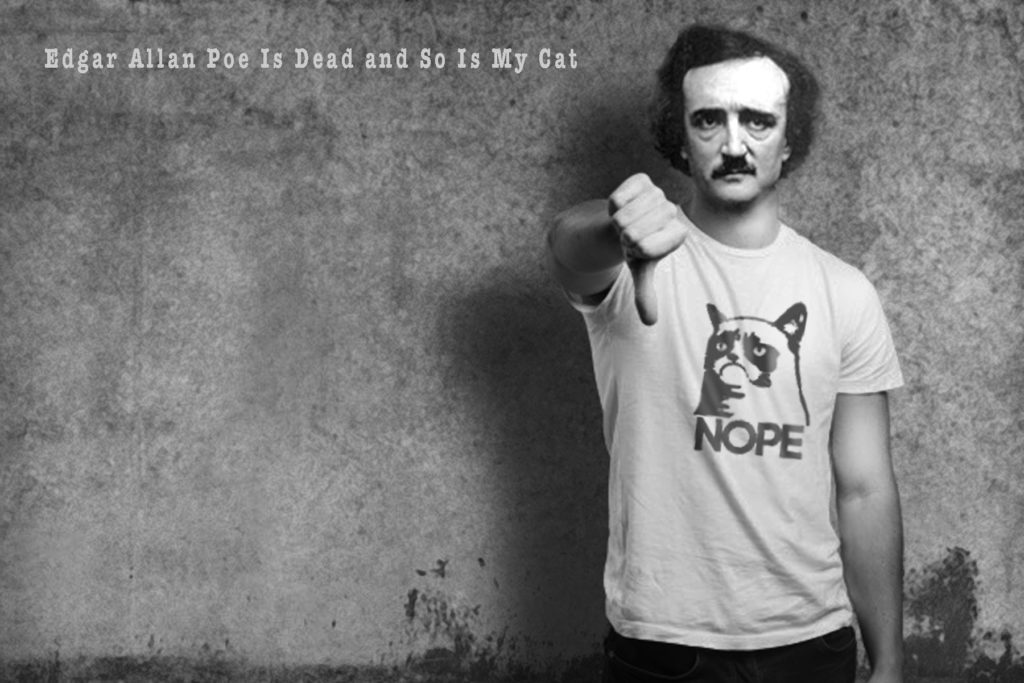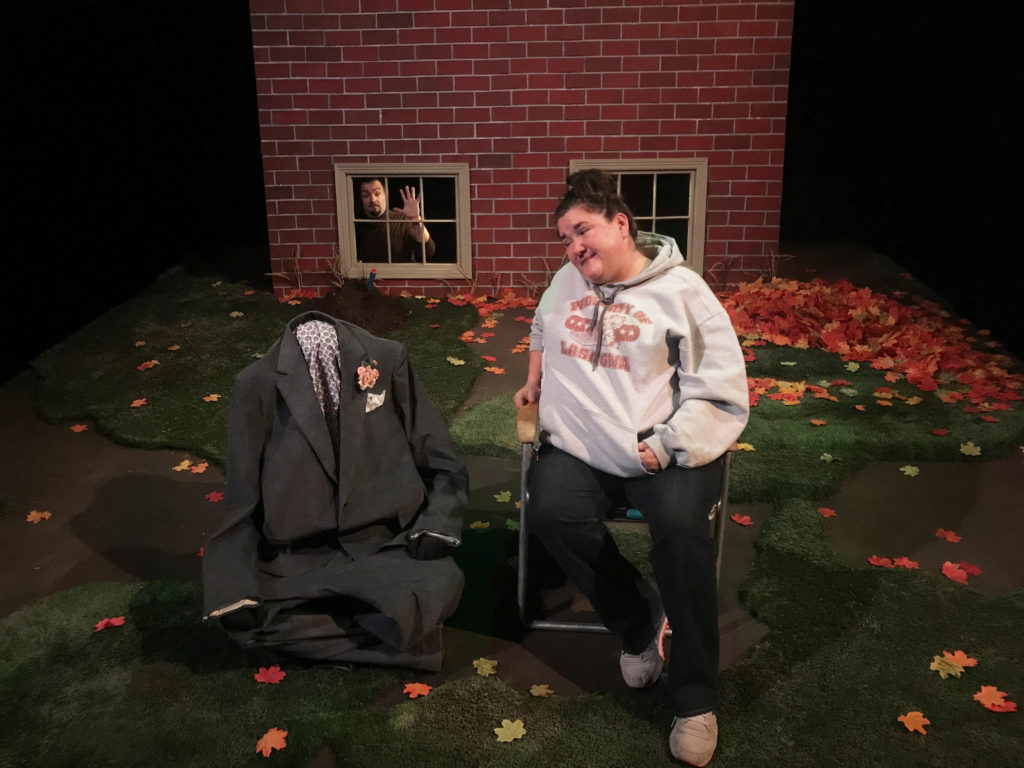Perhaps it’s less common these days, but there was a time when pretentious, well-off folks would have their decorator fill their built-in bookshelves with rows of colorful, shiny new books, or elegant leather-bound sets in assorted sizes — or a mix. But when one would visit that library, the books had obviously not been read, dog-eared, underlined and loved — they were pristine. And suppose those owners wanted visitors to view them as well-read and scholarly?
Irish author Brian O’Nolan elaborated on that idea for an essay he wrote for The Irish Times, under the name Myles na gCopaleen.
“And so, we wrote a play,” say the members of Buntport Theater, who discovered the essay: Brian Colonna, Hannah Duggan, Erik Edborg and Erin Rollman, who perform as well — supported by multi-tasking SamAnTha Schmitz, who runs sound, lights and other tech processes, plus the box office.
This clever, articulate, energetic crew originally connected at Colorado College and formed a theater company when they graduated — which has remained together since and grown stronger as its members created careers. (A few originals have dropped out.) They write, direct and stage all their own plays on highly creative sets — usually based on someone’s essay, story, play, legend or book from the past. And once in a while, someone has just had a “what if?” idea, I’m guessing.
Per Buntport Theater Company’s program notes on O’Nolan: “He imagined a service in which wealthy people could have the books in their extensive libraries `suitably mauled’ in order to look read.” That seed of an idea was enough. The group went to work, writing individually and piecing it together — and created another of its truly hilarious plays: “The Book Handlers.” It runs through March 17 and is clearly worth the time and effort to score tickets if you can!
Buntport has also performed history-based outreach programs for kids, including those at Lone Tree Arts Center in the south area, as well as regularly scheduled events at the Denver theater for adults and children. But the three or four original plays they produce each year require a visit to Denver’s Art District, where they operate in a warehouse space at 717 Lipan St., two blocks west of Santa Fe Drive.
The Book Handlers’ jumbled workshop fills the stage one sees upon taking a seat in the theater. Desks, of course, ladders to higher levels, swinging baskets and buckets for book-transfer, an old bathtub for “water damage,” specific, annotated, corporate-style processes written in a fat volume, dictating words and actions for annotations, wine and coffee spills and dog-earing corners of pages, etc.
Duggan, as Connie Diane, cheerfully sings “Elmer’s Tune” each day when she arrives through the entryway, while Erik Edborg (John), who’s in charge, manages to be silly and officious at the same time, imaging himself in a Teddy Roosevelt role occasionally, while scholarly Jard (Brian Colonna) knows a lot of stuff from his reading — but not here, of course! Erin Rollman is in top form as fussy Linda, who has lots of issues and a special way with words as she waters plants, and sputters through her workday. Amazing energy.
The routine changes, depending on who’s located where, but rope-borne baskets and buckets swing through the air delivering volumes for special coffee stains, pounding, scraping and dunking. They are sent along a sort of belt-drawn assembly line at times, on a slide at others, and stacked awaiting their next treatment, until “suitably mauled,” then shipped out again to make space for more. And all too soon, the 90-minute piece is over — I could have happily watched longer.
Sonya Ellingboe March 12th, 2018 Parker Chronicle








